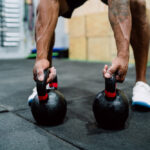Starting an exercise routine when you’re overweight or obese isn’t just tough. It can feel downright intimidating. Gyms are full of people sprinting on treadmills and tossing around heavy weights like it’s nothing, and here you are just trying to figure out where to even begin without hurting yourself. It’s easy to feel like the fitness world wasn’t built for you.
The truth is, jumping straight into high-impact workouts is a recipe for injury and frustration. When you carry extra weight, your joints, especially your knees and ankles, take a bigger hit.
You need a different game plan. One that’s built for your body right now. The goal isn’t to grind yourself into the ground. It’s to move smarter and select the best exercises for obese people: low-impact, pain-free, and consistent. That’s how real, lasting progress happens.
Types of Obesity
Obesity is officially defined by your Body Mass Index (BMI), which is your weight compared to your height. A BMI of 30 or higher puts you in the obese category.
But BMI isn’t perfect. It can be slightly off because it doesn’t account for muscle mass or body composition. Regardless, it’s widely used and a good starting point.
Here are the common types of obesity:
General obesity is characterized by an overall gain of fat across your body. From arms and legs to the stomach.
Those who have more fat packed around the belly fall into the group of central (abdominal) obesity.
Visceral obesity is the type where fat wraps around your internal organs.
Those who struggle with fat that piles up around hips, thighs, and buttocks are probably dealing with peripheral obesity.
Morbid obesity, which is one that brings the highest risks to health, is when your BMI hits 40 or higher.
Risks of Obesity
Obesity isn’t just a “looks” issue, it’s also a health issue that can cause many health problems.
For example:
- Heart disease and stroke can happen when the extra fat clogs arteries and raises blood pressure.
- Type 2 Diabetes, since your body uses insulin differently, which makes your blood sugar spiral out of control.
- Join problems because of carrying too much weight.
- Sleep apnea can be caused by extra fat around your neck that can block airways.
- Certain cancers like breast, colon, kidney, and pancreatic.
- Mental health issues characterized as depression, anxiety, and low self-esteem.
How to Start Exercising If You’re Overweight?
Small, low-impact movements can seem almost too easy at first. But here’s the truth: consistency beats intensity when you’re starting out.
Regular small movements help build strength, improve circulation, and wake up muscles that have been asleep for too long. Over time, they prep your body to handle more challenging workouts without injury or burnout.
The Easiest Exercises for Obese People to Get You Going
If you haven’t moved much lately, start with simple exercises that get your blood flowing without stressing your joints.
Toe Taps: Sit on a chair and tap your toes up and down quickly. Helps with circulation and ankle flexibility.
Trunk Rotations: Stand or sit and gently twist your torso side to side. Helps loosen your spine and strengthen your core.
Sit-to-Stand: Start from a sturdy chair. Sit down, then stand back up without using your hands if possible.
Arm Circles: Stretch your arms out to the sides and make small circles. Great for shoulder mobility and waking up upper body muscles.
Arm Raises: Lift your arms straight up and down or out to the sides. Strengthens shoulders and improves posture.
Seated Leg Extensions: While sitting, straighten one leg out at a time. Great for strengthening quads and improving knee stability.
Marching or Stepping in Place: Lift your knees one at a time like you’re marching. Get your heart rate up without pounding your joints.
Side Steps: Step side-to-side while standing. Adds a little cardio and strengthens hips and thighs.
You can do these exercises several times a day, as long as it feels comfortable. Slight tension is okay, but pain and discomfort are signs you should slow down.
For those ready to incorporate cardio equipment, try this beginner elliptical workout for obese individuals – your first 20-minute routine to safely build endurance
If you’re just starting out and feel like you can do more than this, you can do these exercises for the first 7 days to warm up your body. After that you can switch to some of the workouts that we’re going to talk about now.
Walking
When it comes to exercises for obese beginners, walking is king. And here’s why:
- Low impact: It’s easy on your joints compared to running or jumping.
- Customizable: You control the pace, the distance, and the intensity.
- Scalable: As you get stronger, you can walk longer, faster, or on different terrains to keep challenging yourself.
Can Walking Help with Losing Weight?
Walking burns calories, plain and simple. A brisk walk can torch around 200-400 calories per hour, depending on your weight and pace.
Walking 30 minutes a day, consistently, can lead to noticeable fat loss over weeks and months, especially when paired with even small improvements in diet.
Plus, walking does more than burn fat. It boosts your mood, lowers blood pressure, improves blood sugar control, and strengthens your heart.
Cycling
Cycling is good for obese people because your weight is supported by the seat. So your knees and ankles don’t have to suffer extra pressure.
Most importantly, you control the speed and resistance. You can take it slow or push yourself harder as your fitness improves.
How Effective Is It for Weight Loss?
Cycling burns a ton of calories without feeling like punishment. Depending on your intensity and body size, you can burn anywhere from 300 to 400 calories in 30 minutes.
Plus, cycling works your legs, glutes, and core muscles while improving cardiovascular fitness.
Swimming
If you’re obese and looking for a workout that’s easy on your body but still insanely effective, swimming is hard to beat. It’s one of the few exercises where you can move freely without feeling like your joints are taking a beating.
How Effective Is It for Weight Loss?
Swimming burns serious calories, anywhere from 500 to 600 calories an hour, depending on the intensity and your body weight. But more than that, it builds stamina and strength, setting you up for more intense workouts later if you choose to level up.
And don’t worry if you’re not a great swimmer. Water walking, gentle kicks, holding onto the side, or simple floating exercises still count.
Benefits of Strength Exercises for Obese People
When most people think about losing weight, they picture endless cardio. But if you’re obese and trying to change your body, strength training is just as important.
Strength training helps you build muscle, and muscle is a game-changer. It burns more calories at rest than fat does, which means your body keeps working for you even when you’re not in the middle of a workout.
It also protects your joints. When you’re carrying extra weight, your knees, hips, and back are under constant pressure. Stronger muscles support these joints and help take some of the load off. That makes everyday movements like walking, standing, or climbing stairs feel less painful and more natural.
What To Do for Strength if You’re Obese?
You don’t need to jump straight into lifting heavy weights or doing complicated routines. Here are three solid ways to get started.
Bodyweight Exercises for Obese People (Modified)
When you’re carrying extra weight, you’ll want to modify traditional moves to keep things safe and manageable.
Instead of full push-ups, do wall push-ups. Instead of full squats, try chair squats or partial squats where you only lower partway.
As you get stronger, you can slowly make the moves harder by lowering deeper or adding light weights.
Resistance Bands
Resistance bands let you add resistance without putting too much pressure on your joints, which is crucial when you’re starting out heavier.
You can use them for upper body exercises like rows, chest presses, and shoulder raises, or for lower body moves like seated leg presses and banded squats.
They’re also great for improving flexibility and control, which helps with balance and injury prevention as you progress.
Weightlifting
When you’re ready or if you already feel comfortable, getting into the gym and using weights can be a powerful next step.
Machines are a great starting point because they guide your movement and reduce the risk of bad form. Think about starting with leg presses, seated rows, chest presses, and cable machines.
Free weights like dumbbells can come later, once you’ve built up some baseline strength and confidence. It’s smart to focus on big, compound movements like squats, rows, and presses, but always start light. Master the movement first, then worry about adding more weight.
Try exercises for obese people at one of our gyms, no strings attached. Enroll today to enjoy our 3-day free pass.
Final Thoughts
Starting an exercise journey when you’re obese isn’t about pushing yourself to the limit. It’s about moving smarter, not harder. The key is to focus on exercises that fit your body right now: simple, low-impact, and safe movements that build strength, improve endurance, and set the foundation for real progress.





